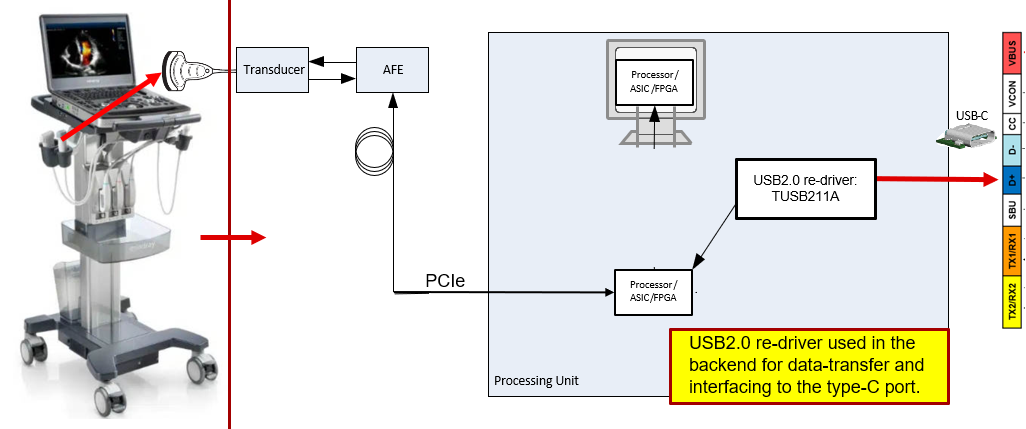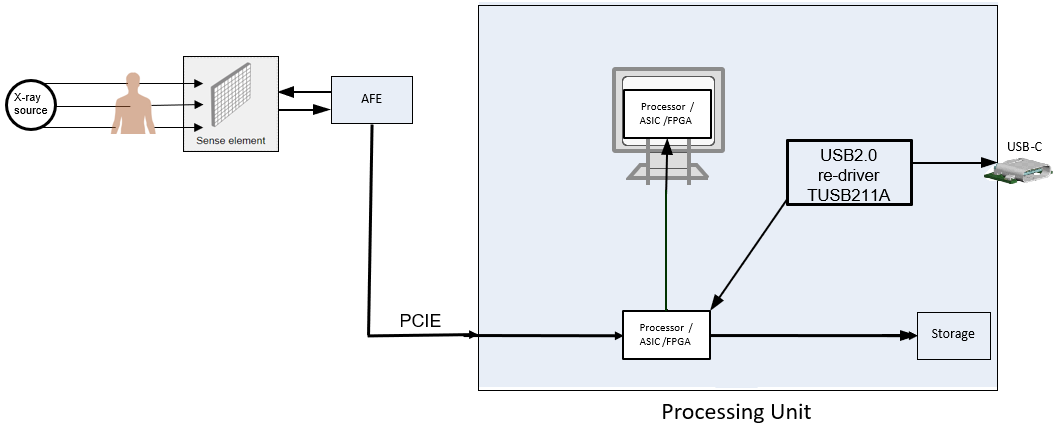SLLA454A April 2019 – August 2024 TUSB211A , TUSB212 , TUSB213 , TUSB214 , TUSB215 , TUSB216 , TUSB217A
- 1
- Abstract
- Trademarks
- 1 Introduction
- 2 USB 2.0 Signal Integrity Challenges
- 3 Choosing to Use a USB 2.0 Redriver
- 4 Redrivers in Automotive
- 5 Redrivers in Enterprise
- 6 Redrivers in Medical
- 7 Re-drivers in Personal Electronics
- 8 Re-drivers in other applications
- 9 Facilitating Easy Use of TUSB211A Using the TUSB211PICO-EVM
- 10Summary
- 11References
- 12Revision History
6 Redrivers in Medical
The backend ports of medical equipment’s backends have USB ports for data-transfer. In equipment such as ultrasound and X-ray depending upon the resolution of the live images being transferred & depending on the screen size being transferred to, lower speed USB can be used for smaller screen. For premium ultrasound usually Type-C and USB3.1 (higher data-rates) are used.
Figure 6-1 shows a Standard ultrasound which has Type-C for data-transfer. Since the Type-C port is external, any cable length can be interfaced with the Type-C port causing the need of re-driver between the processor and the Type-C port to preserve signal-integrity.
 Figure 6-1 Ultrasound Example Application
of a USB Redriver
Figure 6-1 Ultrasound Example Application
of a USB RedriverFigure 6-2 shows an X-ray machine which has Type-C for data-transfer. Since the type-C port is external, any cable length can be interfaced with the Type-C port causing the need of re-driver between the processor and the Type-C port to preserve signal-integrity.
 Figure 6-2 X-Ray Example Application of a
USB Redriver
Figure 6-2 X-Ray Example Application of a
USB Redriver